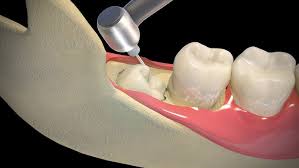Sleep Dentistry for Anxiety: From Panic Attacks to Peaceful Smiles

For many people, visiting the dentist is just another item on their to-do list. But for those who live with severe dental anxiety, it’s far from routine. Even the thought of sitting in a dental chair can trigger a racing heartbeat, sweaty palms, and, in extreme cases, a full-blown panic attack. This level of distress often leads people to delay or avoid dental visits altogether—sometimes for years—resulting in worsening oral health and more complex treatments down the road.
Sleep dentistry, also known as sedation dentistry, is emerging as one of the most transformative solutions for individuals struggling with these intense fears. By allowing patients to undergo dental procedures in a deeply relaxed, anxiety-free state, it turns an overwhelming experience into one that is not only bearable but, for some, even pleasant.
Understanding the Cycle of Dental Anxiety
Dental anxiety often begins with a single bad experience—such as a painful procedure in childhood or a lack of empathetic care—and snowballs over time. The fear can be so powerful that even hearing the sound of a dental drill or smelling antiseptic in a clinic triggers heightened anxiety. As these feelings intensify, individuals start postponing their dental appointments. Small issues like minor cavities or gum inflammation progress into major dental problems, which require longer, more invasive procedures—further reinforcing their fears.
Breaking this cycle requires an approach that addresses not just the dental work itself but also the emotional well-being of the patient. That’s where the promise of sleep dentistry comes in.
How Sleep Dentistry Works
Sleep dentistry uses controlled sedatives to help patients feel calm, relaxed, and, in some cases, unaware of the treatment being performed. While it’s called “sleep” dentistry, most forms don’t involve complete unconsciousness unless general anesthesia is used. Instead, patients enter a state where their awareness of time, surroundings, and discomfort is significantly reduced.
There are several sedation options:
- Nitrous oxide (laughing gas):A mild sedative inhaled through a mask, wearing off quickly after the procedure.
- Oral sedation:Anti-anxiety medication taken before the appointment to promote relaxation.
- IV sedation:A stronger form administered directly into the bloodstream, offering a deeper state of calm.
- General anesthesia:Complete unconsciousness, usually reserved for complex or lengthy treatments.
Each method is tailored to the patient’s anxiety level, medical history, and dental procedure requirements.
Turning Panic Into Calm
Imagine walking into the dental office without feeling your chest tighten or your palms sweat. With sleep dentistry, this scenario becomes possible. For someone prone to panic attacks, even the anticipation of a dental visit can be exhausting. Sedation interrupts this heightened state of alertness, replacing it with a feeling of safety and control.
Patients often describe the experience as if time passed in an instant. Instead of focusing on the sounds, sensations, and steps of the procedure, they simply drift through it—waking up with their dental care complete and their fear having played no role in the experience.
Benefits Beyond Comfort
While anxiety reduction is the most obvious advantage, sleep dentistry also offers practical benefits:
- Efficiency:Dentists can complete multiple treatments in a single session, which is ideal for patients who need significant dental work.
- Reduced Gag Reflex:Sedation minimizes involuntary reactions, making procedures easier for both patient and dentist.
- Pain Management:Sedatives enhance the effects of local anesthesia, ensuring a more comfortable experience.
- Improved Oral Health Outcomes:Patients are more likely to attend appointments regularly when fear is no longer a barrier.
These benefits create a ripple effect—better oral health leads to improved confidence, fewer dental emergencies, and lower long-term treatment costs.
The Emotional Impact
For many patients, overcoming dental anxiety through sleep dentistry is a turning point not only in oral care but also in self-confidence. It can help heal the emotional scars left by previous traumatic dental visits. Patients often report feeling more empowered to schedule follow-up appointments and maintain regular check-ups, breaking free from the years-long cycle of avoidance.
In some cases, this emotional shift spills into other areas of life. The ability to face something once perceived as unbearable fosters resilience, proving to patients that their fears can be managed and even overcome with the right support.
Finding the Right Approach
Not every dental clinic offers every type of sedation, and not all forms are suitable for everyone. Before opting for sleep dentistry, patients undergo a thorough assessment, including their medical history, current medications, and specific anxiety triggers. A good dentist will discuss the options, explain the sensations the patient can expect, and ensure all safety protocols are in place.
Building trust is just as important as the sedation itself. When patients feel listened to, respected, and reassured, the fear begins to lose its hold—often even before the sedative is administered.
For those ready to explore how this approach can help, learning about its role in managing severe dental anxiety is the first step toward turning panic-filled visits into peaceful, positive experiences.


